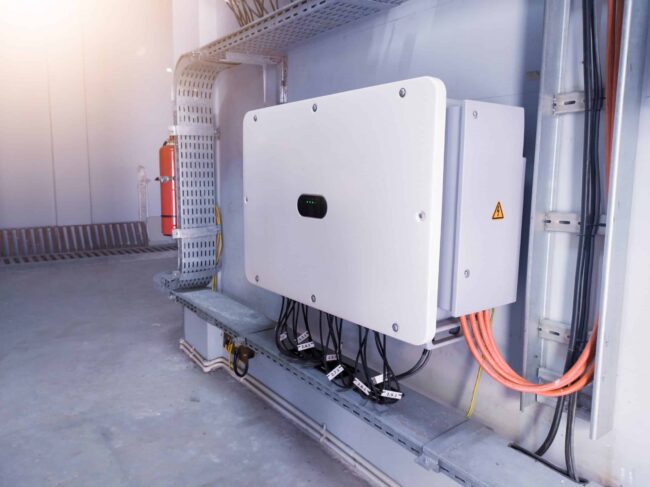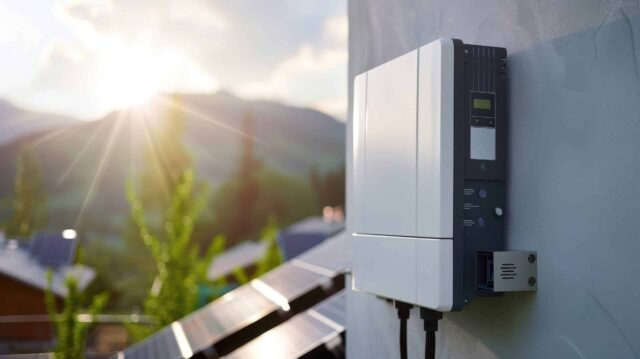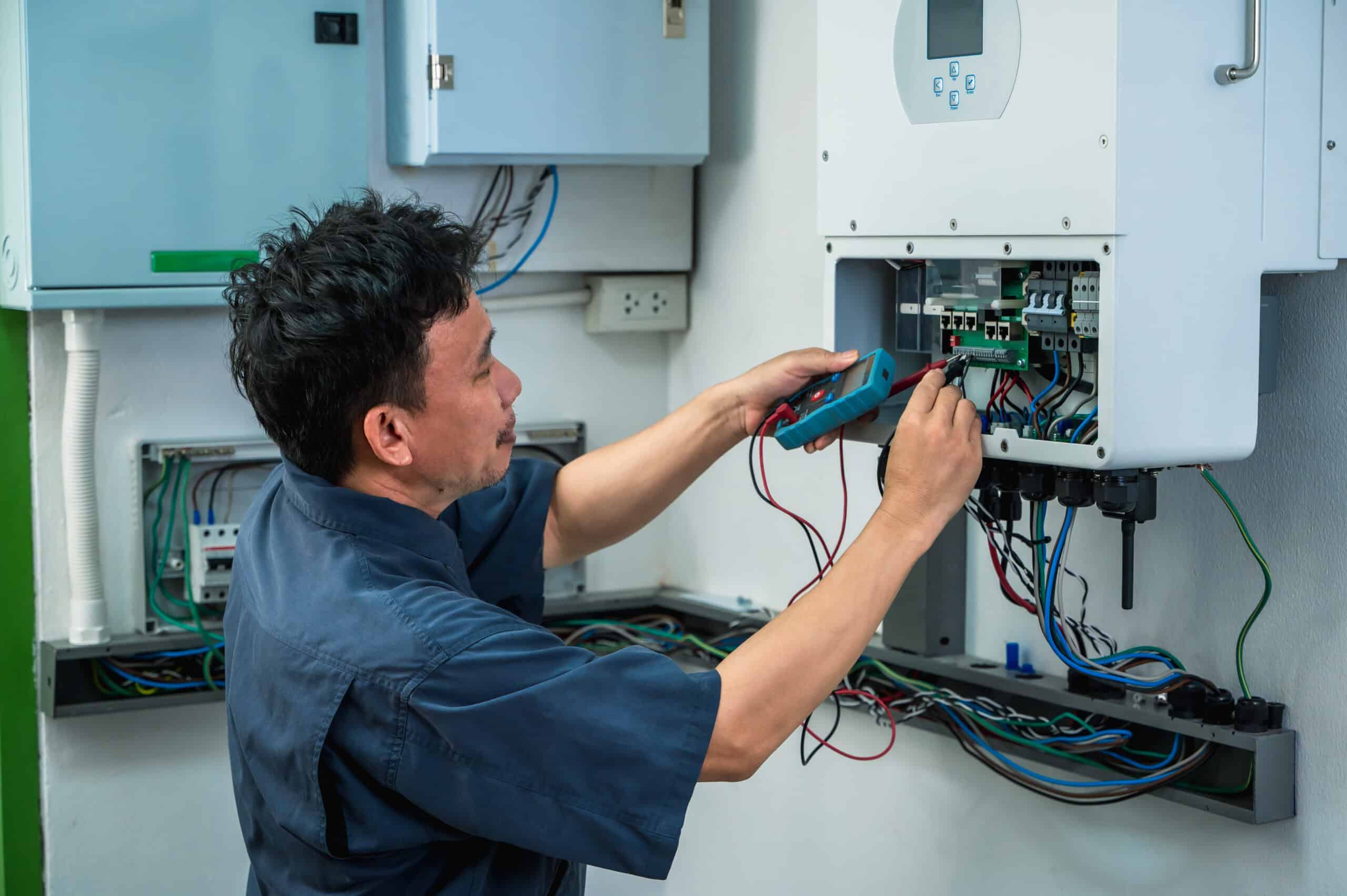As you explore the benefits of solar energy, understanding the longevity of your solar system’s components is crucial.
One such component is the solar inverter, an essential device that converts the direct current (DC) electricity generated by the sun and your solar panel array into alternating current (AC) electricity that can be used in your home.
Typically, the lifespan of a solar inverter will range between 10 to 15 years, but with proper care and maintenance, some can last up to 20 years.
The life expectancy of solar inverters can be influenced by various factors including the quality of the components, the brand, and the environmental conditions in which it operates.
Regularly maintaining your inverter and ensuring it operates in a suitable environment can help maximise its lifespan.
When investing in a solar inverter, you might also consider the warranty offered, which can indicate the manufacturer’s confidence in its product’s durability.
Selecting the right solar inverter for your solar system will depend on your specific energy production needs and the characteristics of your solar installation.
It’s important to research and understand the types of solar inverters available and how the features can affect their lifespan.
This knowledge will arm you with the information necessary to make an informed decision and ensure your solar energy system functions effectively for years to come.
Understanding Solar Inverter Lifespan
The expected lifespan of your solar inverter is determined by factors such as its type and maintenance.
It’s important to understand how these play a role in ensuring the longevity of your solar power system components.
Factors Influencing Longevity
Several elements affect how long your solar inverter will function effectively.
Inverter type is a significant factor; for instance, microinverters tend to have longer lifespans than their string inverter counterparts.
The quality of the electrical components being used, such as capacitors and whether they are dry components or electrolyte capacitors, can also impact lifespan.
External factors include the environment and temperature in which the inverter operates, as extreme temperatures can lead to more wear and tear.
- Quality of Capacitors: High-quality, durable capacitors increase inverter longevity.
- Environment: Exposure to less extreme weather conditions can prolong an inverter’s life.
Comparing Inverter Types
When selecting a solar inverter, it’s essential to compare types.
String inverters and hybrid solar inverters typically last about 10 to 15 years and are a common choice for residential solar power systems.
On the other hand, microinverters and power optimisers, part of the module-level power electronics (MLPE) category, can last longer, often up to 25 years due to their robustness and ability to operate independently from other solar panels.
- String Inverters: Expected to last 10 – 15 years.
- Hybrid Inverters: Expected to last 10 – 15 years.
- Microinverters and Power Optimisers: Can last up to 25 years or more.
Significance of Regular Maintenance
Maintaining your solar inverter can significantly extend its operational life.
This entails regular monitoring for any performance issues and addressing them promptly.
Keeping up with proper care and maintenance as outlined by the manufacturer, along with adhering to warranty requirements, enables your system to perform optimally for as long as possible.
Regular maintenance helps prevent unexpected failures that might otherwise shorten the life of your solar inverter.
- Warranty: Ensure you comply with the terms to maintain its validity.
- Monitoring: Keep an eye on inverter performance to catch issues early.
Solar Inverter Installation and Care
Proper installation and ongoing care of your solar inverter can enhance its performance and prolong its productive lifespan.
Installation Best Practices
When you’re getting your solar inverter installed, it’s important to use a licensed solar installer such as Solar Repairs.
This ensures that the installation complies with all relevant Australian standards and safety requirements.
The solar inverter should be placed in a cool, dry place to prevent overheating and protect it from the elements.
If your inverter is to be installed outdoors, it is typically placed under cover where it’s important to ensure ample ventilation around the unit to disperse heat efficiently.
- Choose an accessible location so maintenance checks can be done with ease.
- Avoid direct sunlight as constant exposure can lead to overheating.
- Ensure proper clearance to facilitate airflow and cooling.
Ongoing Inspection and Maintenance
Conducting regular maintenance is vital to keep your inverter operating smoothly.
You should monitor the performance of your solar power system for any unusual changes that may indicate an issue.
Regular inspection by a professional can catch physical signs of damage early, preventing more serious problems from developing.
- Check indicators and alerts on the inverter for performance issues.
- Review your system’s output regularly to ensure it’s consistent with the expected performance.
- Schedule a professional inspection annually to catch issues before it leads to inverter failure.
Optimising Inverter Efficiency
To get the most from your solar inverter, you should ensure it is operating as efficiently as possible.
This includes monitoring for any error messages and keeping it in conditions that favour optimal performance.
Here are specific actions you can take to optimise inverter efficiency:
- Keep the inverter cool by ensuring it is well-ventilated.
- Keep the area around the inverter clear to avoid blockages that could impede cooling and operation.
- Check for software updates as they can improve functionality and efficiency.
Frequently Asked Questions
Gain insight into solar inverters, including their lifespan, costs, common issues, replacement frequency, and signs that indicate the need for replacement.
How much does a solar inverter typically cost?
The cost of a solar inverter can vary widely based on the type and capacity. Generally, prices can range from a few hundred to several thousand Australian dollars. The price also reflects the complexity and features of the inverter.
What are the common issues encountered with solar inverters?
You might face several issues with solar inverters, such as overheating, electronic faults, or communication errors. Regular maintenance can help prevent or detect these problems early.
How often should you expect to replace a solar inverter?
Given their average lifespan, solar inverters often need replacement once or maybe twice during the lifetime of your solar panel system, which usually spans about 25 to 30 years.
What indicators suggest a solar inverter needs replacement?
Look out for warning signs such as consistent underperformance, error messages on the display, or an inability to connect to the monitoring system. These could indicate that your inverter may require a replacement.
How durable are solar batteries in terms of lifespan?
If your system includes a battery backup, note that these batteries typically have a shorter lifespan than the inverters themselves. They last about 5 to 10 years depending on usage and maintenance.
Reach Out to Solar Repairs Today for all Your Solar Inverter Needs!
Are you wondering how to maximise the lifespan of your solar inverter and ensure optimal performance? Understanding the longevity of solar inverters is crucial for maintaining the efficiency and reliability of your solar power system.
At Solar Repairs, we know that the typical lifespan of a solar inverter ranges from 10 to 15 years, but with proper care and regular maintenance, you can extend this even further. By staying proactive with routine inspections, timely repairs, and addressing any issues promptly, you can significantly enhance the durability of your solar inverter.
Choosing the right inverter, installing it correctly, and protecting it from extreme weather conditions are also key factors in extending its lifespan. Our team at Solar Repairs is dedicated to providing expert guidance, quality installation, and exceptional maintenance services to help you get the most out of your solar inverter.
Visit our website to learn more about our services and how we can assist you in maintaining the longevity of your solar power system. Trust Solar Repairs to keep your investment running smoothly and efficiently for years to come.




